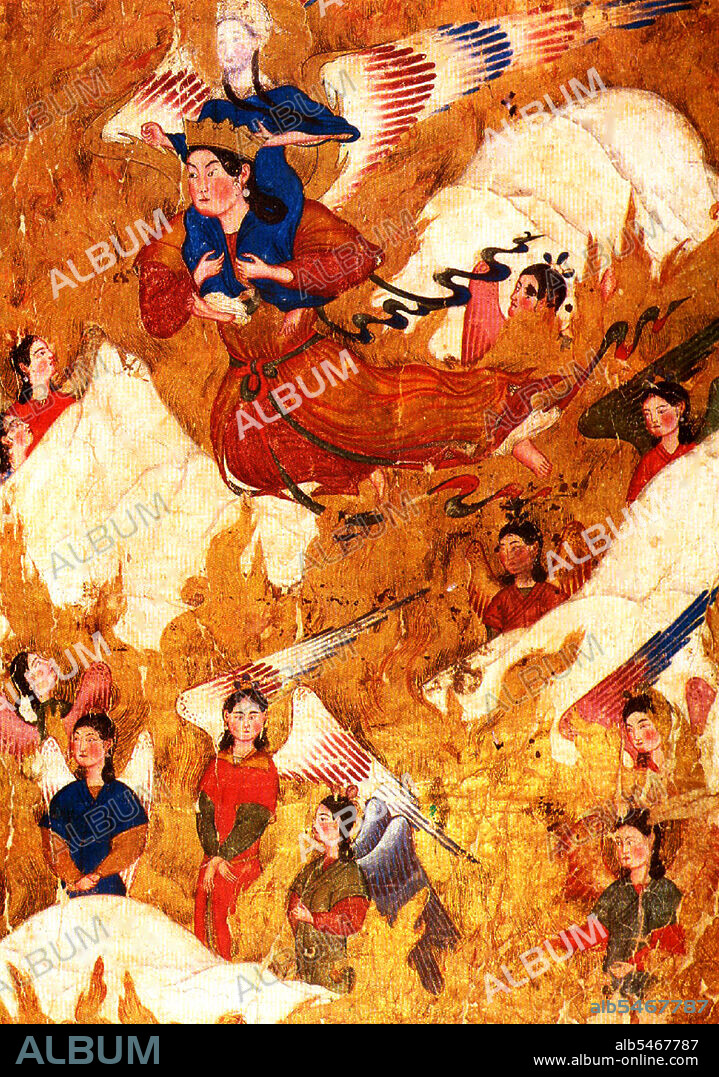alb5467787
The angel Jibril (Gabriel) carries the Prophet Muhammad on his miraj or night journey.

|
Añadir a otro lightbox |
|
Añadir a otro lightbox |



¿Ya tienes cuenta? Iniciar sesión
¿No tienes cuenta? Regístrate
Compra esta imagen

Título:
The angel Jibril (Gabriel) carries the Prophet Muhammad on his miraj or night journey.
Descripción:
Ver traducción automática
The Isra and Mi'raj, are the two parts of a Night Journey that, according to Islamic tradition, the Prophet Muhammad took during a single night around the year 621. It considered as both a physical and spiritual journey. A brief outline of the story is related in surah 17 'Al-Isra' of the Qur'an, and other details come from the Hadith, supplemental accounts of the life ofthe Prophet Muhammad recorded by his companions. In the journey, the Prophet Muhammad travels on the celestial mount Al-Buraq to 'the farthest temple' (Holy Temple of Al-Quds or Jerusalem) where he leads other prophets in prayer. He then ascends through the seven heavens where he speaks to God, who gives Muhammad instructions to take back to the faithful on Earth about the number of times to offer prayers each day. According to traditions, the Journey is associated with the Lailat al Miraj, as one of the most significant events in the Islamic calendar. Representations of the Prophet Muhammad are controversial, and generally forbidden in Sunni Islam (especially Hanafiyya, Wahabi, Salafiyya). Shia Islam and some other branches of Sunni Islam (Hanbali, Maliki, Shafi'i) are generally more tolerant of such representational images, but even so the Prophet's features are generally veiled or concealed by flames as a mark of deep respect.
Crédito:
Album / Pictures From History/Universal Images Group
Autorizaciones:
Modelo: No - Propiedad: No
¿Preguntas relacionadas con los derechos?
¿Preguntas relacionadas con los derechos?
Tamaño imagen:
3500 x 4986 px | 49.9 MB
Tamaño impresión:
29.6 x 42.2 cm | 11.7 x 16.6 in (300 dpi)
 Pinterest
Pinterest Twitter
Twitter Facebook
Facebook Copiar enlace
Copiar enlace Email
Email
